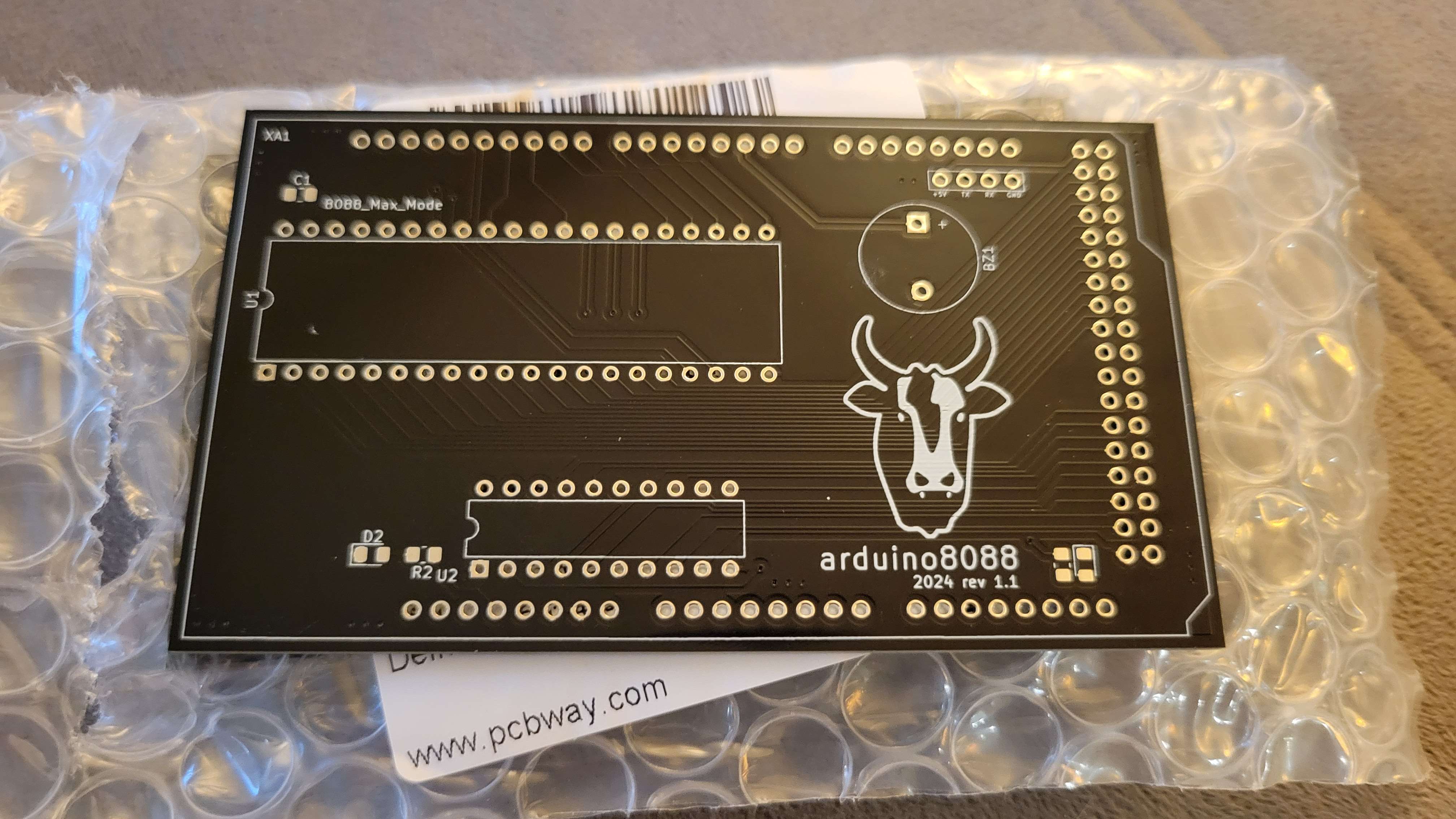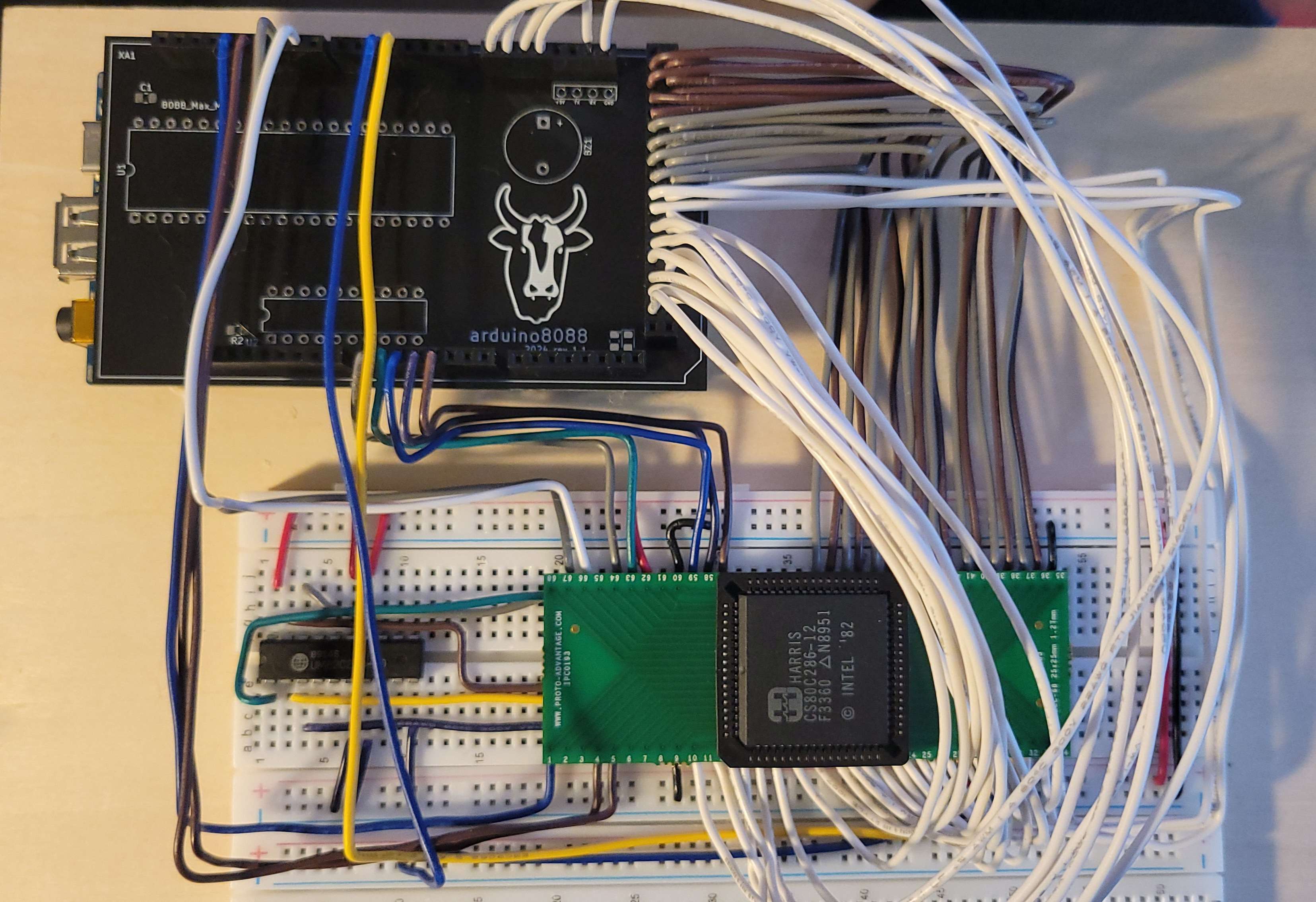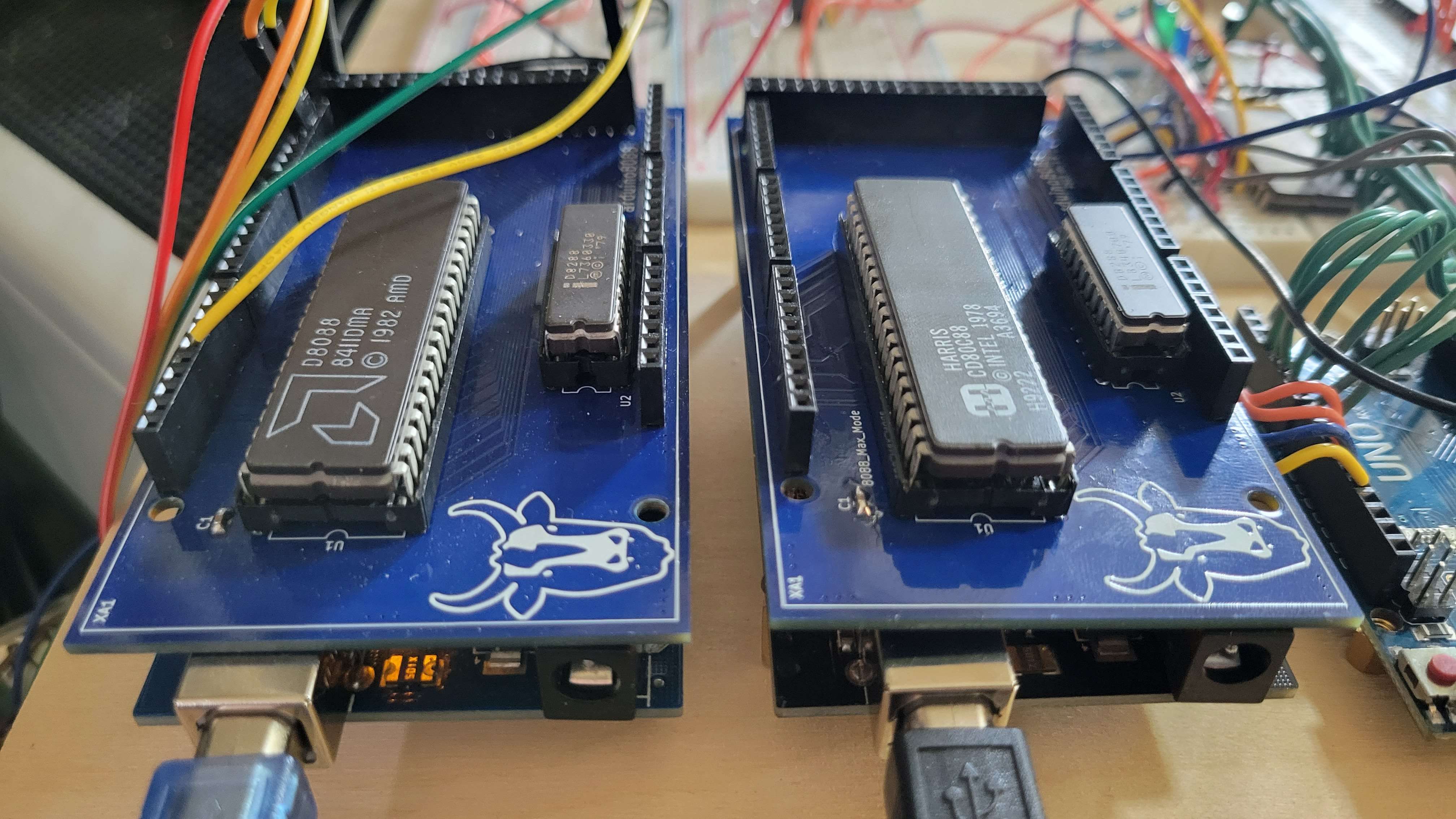13 Replies
This was a project to research the operation of the Intel, AMD and Harris variations of the 8088 CPU.
It was used to generate an 8088 test suite that can be used to validate emulation of this CPU.
The original project was implemented with an Arduino MEGA. It was quite slow due to the serial protocol used; clocking the CPU at some Khz.
I would like to migrate the project to an Arduino DUE or GIGA
GitHub
GitHub - dbalsom/arduino_8088: An Arduino interface for 8088 CPUs.
An Arduino interface for 8088 CPUs. Contribute to dbalsom/arduino_8088 development by creating an account on GitHub.
Unknown User•2y ago
Message Not Public
Sign In & Join Server To View
having fun mapping all the new GPIO registers on the DUE. I chose the DUE over the GIGA for a pretty simple reason, putting a scope on a GPIO pin that was just toggled on and off in the main loop showed a square wave with a period of around ~200 ns, which is about the clock rate of the 8088 anyway. This way I don't have to deal with throttling or an external crystal.
Got the board working on the DUE. It runs almost 7x faster than it did on the MEGA.
Started generating a test set for the V20 CPU.
New pcb revision

Should support 8086 and V30 once code is modified
Unknown User•2y ago
Message Not Public
Sign In & Join Server To View
I hooked up an 80186 too. Because why not.

This revision of 186, the 80L186EB , doesn't have queue status lines. So an additional control method had to be divised.
I'm gonna keep going I think. What do you think is the limit an Arduino can control? Can we control a Pentium? lol

286!
the 286 is working

